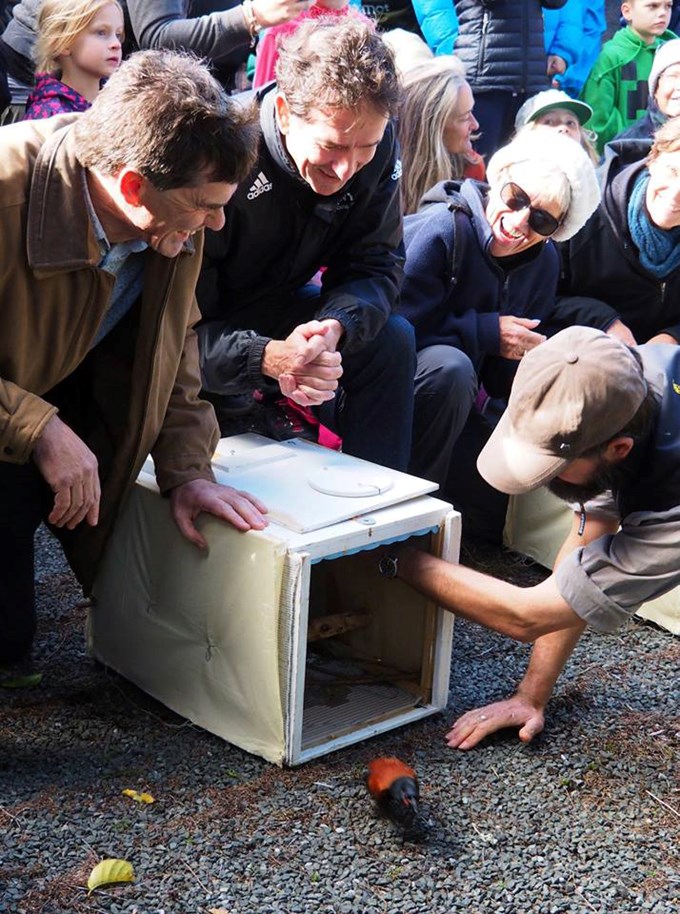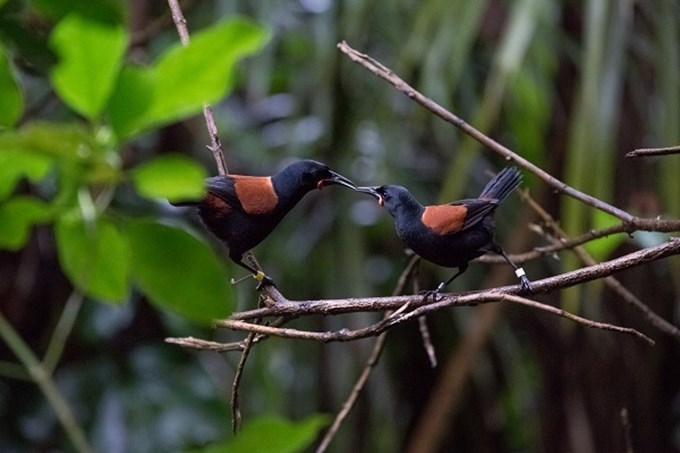On Saturday 26 May, 40 tīeke or North Island saddlebacks arrived from Tiritiri Matangi to their new home at the Shakespear Open Sanctuary in Whangaparāoa.
They will soon be joined by a further 10 tīeke from the Tāwharanui population established in 2012.
This noisy and beautiful New Zealand bird, a smaller relative of the kōkako and huia, was once widespread across the North Island. But its mainland population was wiped out by introduced predators by the late 1800s, and the species at one time survived only on a single offshore island.
Shakespear Regional Park, sitting at the end of the Whangaparāoa Peninsula, is New Zealand’s most visible and accessible open sanctuary. Auckland Council has worked with community partner Shakespear Open Sanctuary Society (SOSSI) and included landowners NZ Defence Force and Watercare to ensure the habitat is predator free and suitable as a haven for threatened, native wildlife such as the tīeke.
Albany Ward Councillor Wayne Walker says the release is a milestone for Shakespear Regional Park and the efforts of many to conserve our native species.
“Tīeke are a vulnerable reminder of our past and a symbol of a pest-free future,” he says.
“We’re delighted Aucklanders can now experience more of our precious natural heritage and experience what a pest-free future might look and sound like.”

Fellow Councillor John Watson agrees and says many people are now keenly watching to see how they take to their new environment.
“These birds can live up to 21 years on our predator-free off-shore islands,” says Watson.
“So we’re all hoping they do just as well here in their new neighbourhood,” he says.
Watch the tīeke arrive at their new home in the Shakespear Open Sanctuary:
Get to know the tīeke
The tīeke are known for their gutsy spirit and distinctive call, with their chirpy conversations lasting throughout the day.
Generally found foraging on the forest floor, the species are poor fliers, which made them easy prey for introduced predators arriving in New Zealand.
The birds are also significant in Māori lore, with legend telling that their back’s distinctive orange ‘saddles’ were caused by the demi-god Maui. Made thirsty by the heat of the sun, Maui asked the tīeke to fetch him some water but the bird ignored him. This irritated Maui and he seized the bird with his hot hands, singing the feathers on its back.
Head out to Shakespear to catch a glimpse – or hear a lot – of the tīeke.
Find out more about Pest Free Auckland here.


